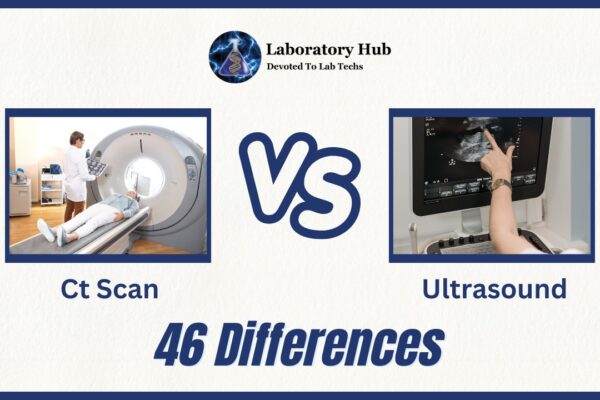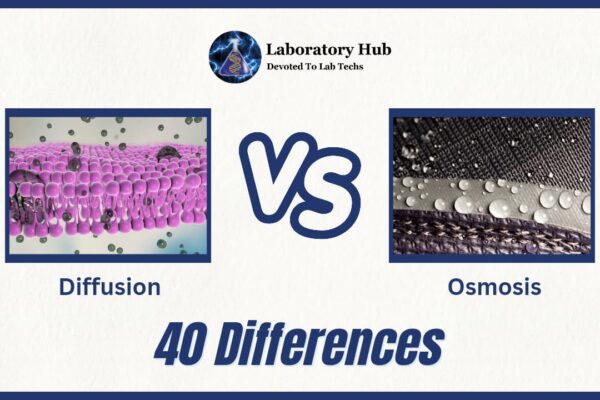Antigenic Shift vs Antigenic Drift- 20 Differences
Introduction
Influenza, which may cause seasonal epidemics and pandemics, remains a major health danger. New strains of the influenza virus can cause severe disease and spread quickly due to its capacity to mutate quickly and bypass human protection. Antigenic drift and shift drive influenza viral evolution. These mechanisms shape the viral landscape, making preventative and control methods difficult for public health agencies.
Antigenic shift and drift affect viral evolution at various scales. Antigenic drift occurs when HA and NA genes accumulate genetic alterations. These modifications gradually alter the virus’s antigenic characteristics, allowing it to elude host antibodies. Thus, seasonal outbreaks with different severity allow the virus to remain in a population. Antigenic drift drives influenza strain change, requiring vaccine updates to match current strains.
Antigenic shift, which happens when two or more influenza strains infect the same host, usually a person or animal, and swap genetic material, is more drastic. This gene segment reassortment creates new influenza virus subtypes with unique surface proteins. The antigenic shift might result in strains with a completely new antigenic profile. Since the population lacks protection, this sudden change in antigenicity can trigger pandemics and widespread illness and death.
Effective influenza monitoring, vaccine development, and public health interventions require understanding antigenic shifts and drift. Surveillance helps detect novel strains and track their antigenic properties, allowing influenza vaccine updates and focused public health measures. Scientists and doctors can better anticipate and treat influenza viruses by understanding viral evolution.
Antigenic shift and drift explain influenza viral evolution. Antigenic drift occurs when genetic changes cause modest antigenic differences, whereas antigenic shift occurs when strains exchange genetic material, creating new subtypes. Researchers may detect, prevent, and control worldwide influenza epidemics by understanding these mechanisms.
READ ALSO: Saturated vs Unsaturated fatty acids- 25 Differences
S.No. | Category | Antigenic Shift | Antigenic Drift |
1 | Definition | A major change in the antigenic properties of a pathogen, resulting from the reassortment or exchange of genetic material. | Minor changes in the antigenic properties of a pathogen, resulting from accumulation of point mutations. |
2 | Occurrence | Occurs sporadically and usually leads to the emergence of novel strains. | Occurs gradually and continuously over time, resulting in the diversification of strains. |
3 | Impact | Often associated with the emergence of pandemics or large-scale epidemics. | Usually responsible for seasonal flu outbreaks and localized epidemics. |
4 | Genetic Basis | Involves the acquisition of new genetic segments through reassortment of genome segments from different strains. | Involves point mutations in the viral genome, particularly in the genes encoding surface antigens. |
5 | Mechanism | Results from the mixing of genetic material between different strains, leading to the formation of novel antigenic combinations. | Results from the accumulation of mutations over time, leading to gradual antigenic changes. |
6 | Viral Examples | Influenza A viruses are known for undergoing antigenic shift. | Influenza A, B, and C viruses can undergo antigenic drift. |
7 | Time Scale | Antigenic shifts occur relatively infrequently, typically over several years to decades. | Antigenic drifts occur more frequently, usually within a single flu season or over a few years. |
8 | Impact on Host Immunity | Antigenic shift results in the emergence of strains that can evade preexisting immunity, leading to more severe outbreaks. | Antigenic drift allows the virus to partially escape preexisting immunity, leading to milder or modified infections. |
9 | Immune Response | Antigenic shift can lead to the absence of preexisting immune memory, requiring the development of new vaccines. | Antigenic drift can be accounted for by annual updates of influenza vaccines to match the circulating strains. |
10 | Genetic Reassortment | In antigenic shift, genetic reassortment occurs between different strains of the same virus subtype or between different subtypes. | Antigenic drift does not involve genetic reassortment but rather the accumulation of mutations in existing strains. |
11 | Cross-Species Transmission | Antigenic shift is often associated with cross-species transmission, allowing the virus to infect new host species. | Antigenic drift does not necessarily involve cross-species transmission but occurs within existing host species. |
12 | Severity of Outbreaks | Antigenic shifts have the potential to cause severe and widespread outbreaks with high morbidity and mortality. | Antigenic drifts usually result in milder outbreaks, as partial immunity from previous exposures provides some protection. |
13 | Pandemic Potential | Antigenic shift increases the likelihood of pandemics, as new strains with limited human immunity can rapidly spread. | Antigenic drift alone is unlikely to cause pandemics but contributes to the seasonal flu patterns. |
14 | Surveillance Challenges | Antigenic shift poses challenges for surveillance and prediction due to the sudden emergence of novel strains. | Antigenic drift poses challenges for surveillance but is relatively easier to monitor through ongoing surveillance efforts. |
15 | Role in Vaccine Development | Antigenic shift necessitates the development of new vaccines targeting the emergent strains to confer protection. | Antigenic drift influences the selection of strains included in annual flu vaccines to ensure better match with circulating strains. |
16 | Immunological Escape | Antigenic shift allows the virus to evade preexisting immunity by acquiring new antigenic properties. | Antigenic drift represents a gradual evasion strategy by the virus, allowing it to partially escape preexisting immunity. |
17 | Immune Memory | Antigenic shift results in the lack of immune memory for the newly emerged strains, making the population more susceptible. | Antigenic drift allows for partial retention of immune memory, providing some level of protection against related strains. |
18 | Genome Segments | Antigenic shift involves the reassortment of genome segments, including those encoding surface antigens. | Antigenic drift affects the genetic sequences of surface antigens due to point mutations in the viral genome. |
19 | Major Genetic Changes | Antigenic shift leads to the acquisition of entirely new sets of genes or gene segments from different strains. | Antigenic drift involves minor changes in the existing genes, primarily due to point mutations. |
20 | Example Outbreaks | The 2009 H1N1 influenza pandemic and the emergence of avian influenza strains are examples of antigenic shift. | Seasonal flu outbreaks caused by gradual changes in circulating strains are examples of antigenic drift. |
Frequently Asked Questions (FAQs)
Influenza virus evolution involves antigenic shift and drift. Antigenic drift occurs when genetic mutations in viral surface protein genes gradually affect the virus’s antigenic characteristics. When two or more influenza strains infect the same host, gene segments reassort, and new virus subtypes with unique antigenic signatures arise.
Antigenic drift drives seasonal influenza epidemics. The virus gradually accumulates mutations to escape host protection, requiring frequent influenza vaccine updates. Antigenic shifts can create new influenza subtypes. Since the population lacks tolerance to the new strain, pandemics may ensue.
Antigenic drift requires frequent influenza vaccination updates to protect against current strains. Surveillance helps develop vaccines and track strains. In prior pandemics, the antigenic change caused new subtypes that required new vaccinations. To prevent and manage influenza epidemics, vaccine development must address antigenic drift and shift.
Global influenza surveillance systems track influenza viral genetic and antigenic traits. This entails sequencing and evaluating patient viral samples for genomic alterations and antigenic characteristics. These monitoring programs track influenza virus evolution, detect antigenic drift or change, and guide public health interventions.
Surveillance helps uncover trends and new strains. This information helps public health officials improve the influenza vaccine formulation and promote vaccination, proper respiratory hygiene, and social separation during epidemics. Monitoring and preparation can reduce the effect of new strains and aid the pandemic response.







